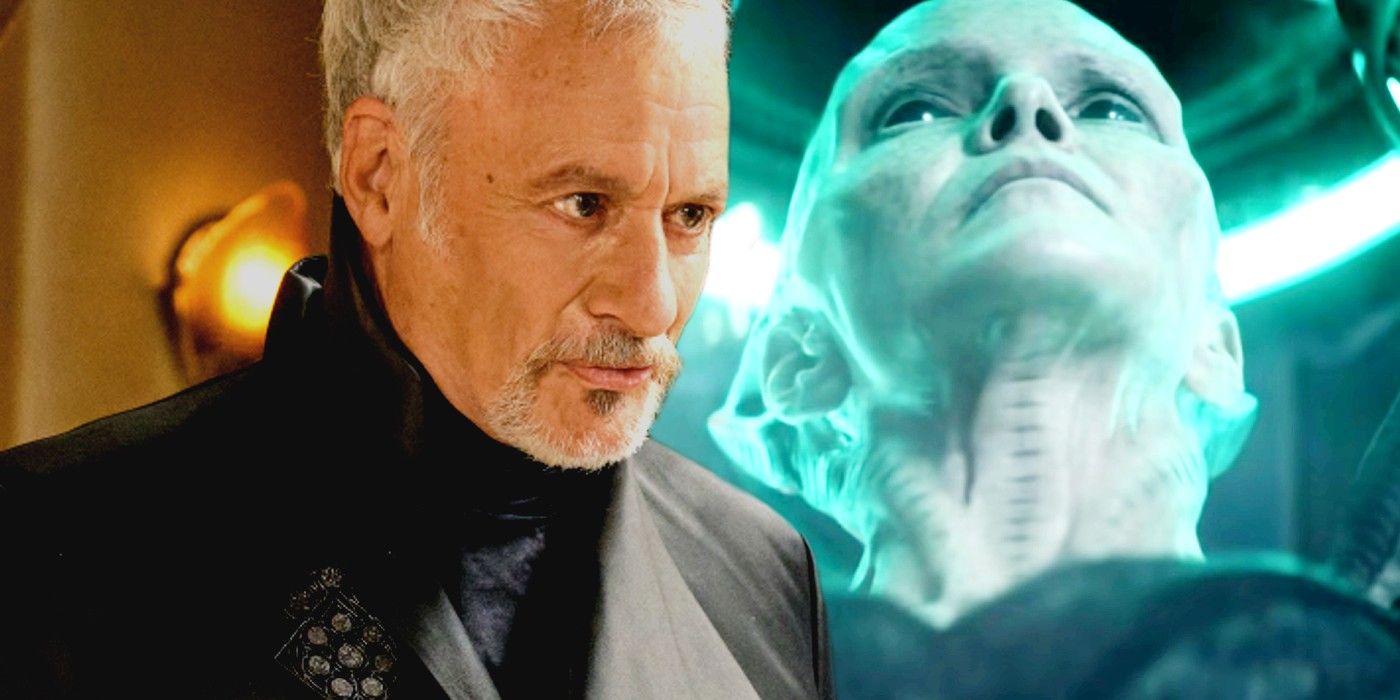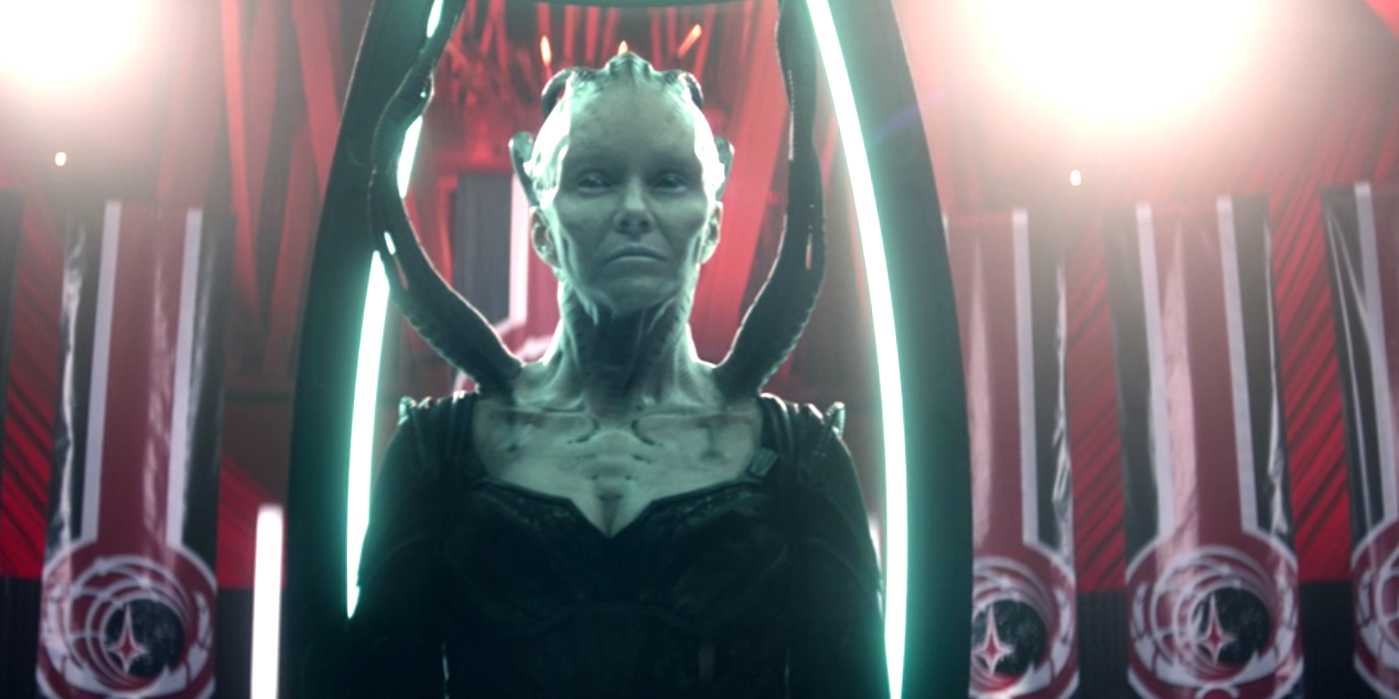
Do the Borg want peace with the Federation? Q's actions in Star Trek: Picard season 2's "Penance" certainly point toward that conclusion. In Star Trek: Picard's dramatic season 2 premiere, the Stargazer encountered a subspace anomaly broadcasting a request to join the Federation and demanding to speak only with Jean-Luc Picard. Once Patrick Stewart arrived on the scene, the Borg revealed themselves. The Queen transported onto Stargazer's bridge uninvited and soon began assimilating the fleet's technology, provoking a shootout that would've ended in self-destruction had Q not made a timely intervention.
Though many interpreted episode 1's Borg confrontation as a deliberate act of aggression, Star Trek: Picard dropped a few clues suggesting otherwise. Why would the Borg use sneaky battle tactics, and give the Federation time to deliberate? Why would the Borg Queen only stun the attacking bridge crew, and why does Star Trek: Picard make such effort pointing this detail out? One Star Trek: Picard theory posits the Borg really did wish to join the Federation, and Q interfered because Picard made the wrong choice by hitting self-destruct instead of daring to trust his old, cybernetic enemies.
As the finer details of Q's plan come to light in Star Trek: Picard season 2's "Penance," that theory now looks considerably stronger. For starters, we know Q has dumped Picard and his gang in an alternate history where one changed detail from 2024 Los Angeles resulted in the Federation becoming the Confederation. In a turnabout worthy of the Mirror Universe, the Confederation has made Earth a planet of conquerors, moving from world to world waging war in the name of racial purity. They take pride in violence, revel in dominance, and thrive on discrimination. The Confederation are little better than the Borg... which may be the very point Q is trying to make. Because diplomacy took a vacation during episode 1's Stargazer battle, perhaps Q is now showing Picard how easily his precious Federation could've become a similarly evil race - the Borg of the Alpha Quadrant. That knowledge could provide the foundation Picard, Seven, Rios, and the others need to believe the Borg are capable of changing.

Also significant is how Q's "penance" forces Picard to seek the Borg Queen's help. In order to fix the timeline, Jean-Luc must travel back to 2024, but - as Q undoubtedly knows - the only method of time travel available is the Borg Queen prisoner in Confederation HQ. Essentially, Q has created a scenario where saving the galaxy forces the likes of Picard and Seven to cooperate with a Borg Queen, and once again, this exercise highlights common ground between the two sides. If Q's ultimate intention is to make Picard pick the "road not taken" of peace between Federation and Borg, engineering a situation whereby Star Trek: Picard's heroes must join hands with their enemies is a good way of fostering that trust.
After showing his favorite captain a version of history where the Confederation ruthlessly hunt the Borg (rather than the Borg ruthlessly hunting the Federation), Q probably plans to reinsert Picard back onto the Stargazer's bridge, where he can choose a different course of action, inspired by lessons learned visiting Earth's alternate future. Q describes this test as "penance," but rather than penance for Jean-Luc, maybe the mission is Q's own penance for introducing the Borg and Federation in the first place - which would make sense if Q (as Picard suspects) is close to death.
Star Trek: Picard continues Thursdays on Paramount+.
Comments
Post a Comment